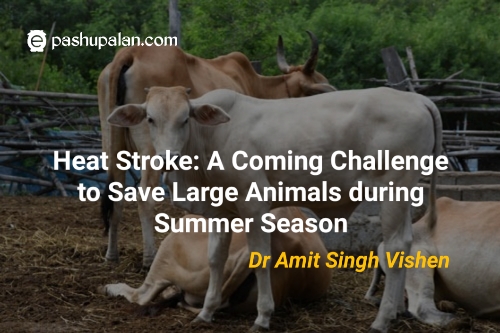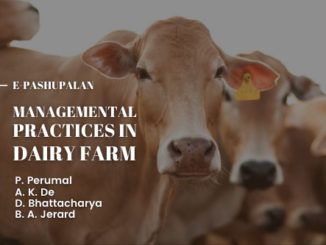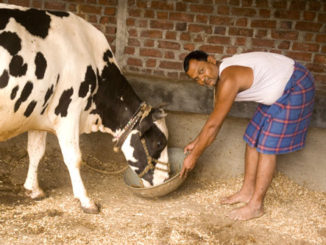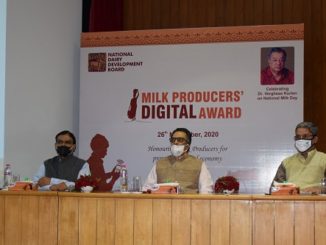Everyone has heard the name of heat waves and these heat waves not only affect the human beings but also animals. After a couple of months, the heat waves will be blowing hard and it is important for the animal owners to save their animals by keeping certain management ideas. These heat waves cause heat stress on animals lead to productivity loss on account of rise in body temperature, reduced feed intake, sweating, panting, increased pulse rate, increased peripheral blood flow, reduced growth hormones, high mortality, increased water intake, reduced milk production and reduced breeding efficiency.

There is a difference between a heat stressed cow and heat stroke cow. A heat-stressed cow will show signs of open-mouth panting with quick, shallow breathing but can still stand while a heat-stroke cow will usually be down and not rise. A heat-stroke cow will have shallow, rapid respirations and usually appears depressed. The pupils of the eyes will be dilated. The animal will feel hot to the touch. She may or may not be sweating. If we do a rectal on her, she will feel like she is burning up internally. Heat-stroke animals tend to not drink water while a heat-stressed animal will. Basically the difference between a heat-stressed cow and a heat-stroke cow is that the heat-stroke cow will have lost control of normal functions like cannot stand or will not drink.
MEASURING HEAT STRESS THROUGH SYMPTOMS
Assessing the level of heat stress is important to prevent or reduce production losses due to heat stress or even prevent mortality in severe cases. Scoring the levels of heat stress by the symptoms (Panting Score) shown by animals would give an idea about the condition of the animals.
|
BREATHING CONDITION |
PANTING SCORE |
BREATHS/MINUTE |
| No panting– normal Difficult to see chest movement |
0 |
<40 |
| Slight panting, mouth closed, no drool or foam. Easy to see chest movement |
1
|
40-70 |
| Fast panting, drool or foam present. No open mouth panting |
2 |
70-120 |
| As for 2 but with occasional open mouth, tongue not extended |
2.5 |
70-120 |
| Open mouth + some drooling. Neck extended and head usually up |
3 |
120-160 |
| As for 3 but with tongue out slightly, occasionally fully extended for slight periods + excessive drooling |
3.5 |
>160 |
| Open mouth with tongue fully extended for longer periods + excessive drooling. Neck extended and head up. |
4 |
>160 |
| As for 4, but head held down. Breath from flank. Drooling may cease. |
4.5 |
May decrease |
MANAGEMENT OF HEAT STRESS
- A healthy normal cow needs about 100 liters of water to manage heat so the farmers should ensure the adequate water availability to animals.
- Drinking water should be provided under shade to ensure cooling by evaporation.
- Ensure shade over the animals. If trees are not available thatched roof of a minimum height of 9 feet should be constructed. Agri-nets with 20% perforation could also be useful. In desert like situations, community shades could be introduced.
- Misting of water over the body of animals at least thrice in an hour is useful. Auto sprinklers with mini pumps and cyclic timers should be preferred. Cooling systems reduce heat stress and maintain milk production.
- Air circulation in covered sheds should be increased. Ensure one ventilator of 3 x 1 feet per cow.
- Use ceiling fans or blowers wherever power is available.
- Create barriers against hot wind. Thatched wall should be preferred. Wet gunny cloth is another good option.
- Feed the animals during morning, evening & night time.
- Prefer grazing during early morning & evening hours.
- Shave the hair coat (remove hair).
- Ration to be changed so as to provide same nutrients at reduced dry matter intake.
- Potassium rich mineral mixture should be preferred.






2 Trackbacks / Pingbacks